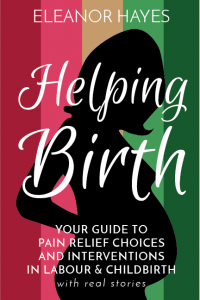Get this baby out now! A guide to birth interventions
What are birth interventions.
On the whole, birth interventions are not usually planned for in early pregnancy. However, the two major interventions many parents face are an induction of labour or caesarean.
In many cases, birth interventions are required for medical reasons.
For example, if you have placenta praevia, a condition where the placenta covers the opening to the uterus, then a caesarean birth is really the only option for you. These interventions help to save mothers’ and babies’ lives.
Some birth interventions, however, in particular induction of labour, are based on general guidelines and hospital policy, rather than a real need for the mother or baby.
In tandem with my article about labour pain relief choices, all planned and unplanned birth interventions are summarised here to help give parents a better understanding of what actually happens and what the possible implications are.
It is not my place to decide if a birth intervention is necessary, but I feel strongly that all parents should understand if the intervention is really necessary in their personal case, and if so, what that means for the rest of their birth.
Common Birth Interventions
Induction of Labour (or augmentation of labour)
Induction of labour seems like a simple, single process.
In reality, it is comprised of a series of interventions that generally happen in a certain order, in order to either stimulate labour to begin (induction) or help it progress more quickly (augmentation).
You can go through part of the induction journey and change your mind, however, after a certain point it is a one-way street and you can’t opt out.
As each stage in the induction process is an intervention in itself, and I have written a clear guide to the entire process of induction of labour here.
What remains the biggest challenge with induction is deciding if and when to have it. I have also written extensively about this discussing the meaning of the due date, and how to choose whether to have an induction or not.
In summary, it can be a long and complex process, with many stages that can be successful or not depending on the body’s readiness to go into labour naturally.
It is clear that having an induction increases your chances for further intervention – 30% of people inducted require further assistance such as forceps or caesarean.
It is generally thought this is due to the far greater intensity of contractions that an induction of labour causes, making it more likely the mother will want pain relief, and then have to deal with the implications of the pain relief.
KEY BENEFITS: can help to bring on labour for medical reasons where there is a concern for mother or baby, can speed up labour.
KEY RISKS: it isn’t always successful, brings a higher chance of needing labour pain relief or further birth interventions, can make contractions more painful and intense.
Episiotomy
An episiotomy is a cut made in the posterior edge of the perineum – the opening of the vagina towards the rear – to make more space for the baby’s head to be born.
A controlled cut is thought to minimise the risk of pain and trauma to the perineum, enabling the baby to be born quickly.
It is used generally when the active stage of labour (pushing) is taking a long time and the baby appears to be a bit stuck.
If you have a forceps or ventouse (see below), then it is usually done in conjunction with an episiotomy to avoid tearing.
Episiotomies can be done with an anaesthetic but often, if there is a concern for the baby, it will be performed without.
It can mean avoiding a caesarean or assisted delivery but has postnatal healing implications for the mother.
It will be stitched up by a midwife after birth using dissolvable stitches.
KEY BENEFITS: quickly helps create more space for the baby to enable it to be born immediately, can help avoid further birth interventions.
KEY RISKS: introduces trauma to the perineum, can be very painful postnatally, can result in temporary or permanent tissue or nerve damage.
Assisted Delivery (forceps or ventouse)
 Assisted or Instrumental delivery is assisting the delivery of the baby’s head manually using either forceps or ventouse (suction cap) because the baby is in an awkward position, it needs to be delivered more quickly (second stage taking too long) or the mother is too exhausted to push
Assisted or Instrumental delivery is assisting the delivery of the baby’s head manually using either forceps or ventouse (suction cap) because the baby is in an awkward position, it needs to be delivered more quickly (second stage taking too long) or the mother is too exhausted to push
Forceps are a tool that looks a bit like large tongs that have been a tool in birth for nearly 400 years. They are used to help to turn a baby who is not in the correct position to birth, and to help gently pull it through the birth canal.
Ventouse is a method of delivery that involves placing a cap upon the baby’s head that is held in place through vacuum suction and is used to help extract the baby from the birth canal.
Each method is not planned and is an emergency procedure to help a baby be born very quickly, so is not really one that you choose.
Which method is chosen will depend on the individual situation.
An episiotomy is usually given in conjunction with forceps or ventouse to minimise bruising and trauma to the area.
KEY BENEFITS: Helps babies be born very quickly if the medical team are concerned about the well-being of the baby or mother, and delivery is taking a long time. Can help avoid a caesarean section.
KEY RISKS: can result in bruising or injury to the baby, results in bruising and trauma to the mother, often with an episiotomy.
Caesarean Section
A caesarean birth is a major abdominal procedure to surgically remove the baby from the uterus (womb). Under a local anaesthetic (epidural), or general anaesthetic, the skin, muscles and uterus are cut to get the baby out quickly.
 An elective caesarean (ELCS) is planned in advance and happens before labour starts.
An elective caesarean (ELCS) is planned in advance and happens before labour starts.
An emergency caesarean (EMCS) occurs at short notice during labour when there is a concern about the mother or baby that is not immediately life-threatening. In this case, once a decision has been made to have the caesarean, the procedure is usually carried out within 30–75 minutes under local anaesthetic.
A true emergency caesarean – sometimes referred to as a crash caesarean – is when the baby needs to be delivered immediately due to serious concern for the wellbeing of the baby or mother. This is usually undertaken as quickly as possible – perhaps within 5-10 minutes if possible – under a general anaesthetic.
It is a complex birth intervention with many reasons for it to occur, depending on whether it is elected or emergency. There is no quick way to cover a caesarean and more research is strongly advised.
KEY BENEFITS: Assists babies to be born when natural labour is not possible, or proving difficult or dangerous for the baby or mother.
KEY RISKS: major abdominal surgery for the mother with significant recovery time for at least 6 weeks post-birth.
Helping Birth
In my book, Helping Birth: Your guide to pain relief choices and interventions in labour and childbirth with real stories, I go into great detail about all labour pain relief choices and common birth interventions. I use the BRAIN framework (Benefits, Risks, Alternatives, Implications, Nothing) to look at each option's pro's and cons, to help you understand which choices are right for you and your baby.
I discuss what each option is, what it feels like and what happens, discuss the risks and benefits, and give advice as to what you can do to minimise complications if you choose these drugs or procedures.
There is an insight to help you understand risks and statistics around birth, and also things that may happen to you or your baby such as continuous monitoring, and immediate cord clamping.
Each of the 25 chapters has women's real-life stories and experiences to enhance your understanding of what it is really like to experience these labour pain relief choices or birth interventions.
Buy the book for £10 on Amazon (free delivery in the UK).
Read more about labour pain relief choices here…
References
Further research on these interventions can be found here:
Induction of labour – https://www.nhs.uk/conditions/pregnancy-and-baby/induction-labour/
Episiotomy – https://www.nhs.uk/conditions/pregnancy-and-baby/episiotomy/
Forceps or Ventouse – https://www.nhs.uk/conditions/pregnancy-and-baby/ventouse-forceps-delivery/
Caesarean – https://www.nhs.uk/conditions/caesarean-section/
‘Inducing Labour (NICE Clinical Guideline CG70)’, National Institute for Health and Clinical Excellence (UK), https://www.nice.org.uk/guidance/CG70/chapter/1-Guidance#prevention-and-management-of-complications, 2008
Image credits:
L0058090 Anderson-type obstetrical forceps, United Kingdom, 1901-1930
Credit: Science Museum, London. Wellcome Images https://wellcomeimages.org
Mabel is born by Caesarean Section. Credit: Sarah Sheen
A baby is born via caesarean section. Credit: By Astaffolani (Own work) https://www.gnu.org/copyleft/fdl.html

What’s the point in writing a birth plan?
There is lots of talk in pregnancy around writing a birth plan and it stirs up lots of debate. On the one hand, some people feel it is most important to just "go with the flow" and be as flexible as possible and therefore feel that creating a birth plan is...

Could birthing alone be a good thing?
The recent Coronavirus outbreak has had a huge impact on maternity services and expectant parents around the world. Routine pregnancy appointment and scans have been cancelled or limited to the mother attending alone meaning she is having to leave her birth partner at...
Best Clary Sage Oil brands for labour
Clary sage oil (or to use its Latin name Salvea Sclarea) is a popular choice for people hoping to kick-start labour, or enhance it once it has begun. I have written previously about how you can use clary sage oil safely in labour. Using this sweet-smelling essential...

Natural Ways to Induce Labour – your guide to myths and facts about childbirth induction without drugs
So many women feel fed-up at the end of their pregnancy. On the one hand, you feel as if you have been pregnant for 6 million years and frankly another day is too much! On the other hand, you feel really sure that you want to let things happen as naturally as...

10 tips for practising yoga in pregnancy
Yoga in pregnancy is really beneficial whether you are a complete beginner, or have a long-standing practice. It is highly advisable to find a yoga class for pregnancy as it will be tailored to the needs of your body in pregnancy, and also help prepare you...

